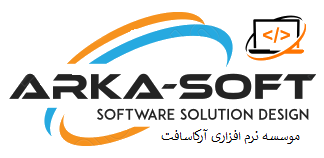A business plan is a written document that outlines the goals, strategies, and financial projections of a business. It serves as a roadmap or blueprint for the organization, providing a detailed overview of how the business will operate, grow, and achieve its objectives.
The purpose of a business plan is to outline the key aspects of the business and provide a strategic framework for decision-making and implementation. It helps entrepreneurs and business owners clarify their vision, understand the market, and identify opportunities and challenges. It also serves as a communication tool when seeking funding from investors or financial institutions.
A business plan typically includes the following key elements:
1. Executive Summary
This section provides an overview of the business, summarizing the key highlights of the plan. It briefly outlines the business concept, target market, competitive advantage, and financial projections. The executive summary is usually written last but appears at the beginning of the business plan.
2. Company Description
This section provides a detailed description of the business. It includes information about the legal structure (e.g., sole proprietorship, partnership, corporation), location, history, and key milestones. It also covers the products or services offered, the target market, and the unique selling proposition.
3. Market Analysis
This section analyzes the target market and industry. It includes information on the industry’s size, trends, growth potential, and key competitors. It identifies the target market segment(s), their needs, demographics, and preferences. Market research and analysis help validate the demand for the business’s offerings and inform marketing and sales strategies.
4. Organization and Management
This section outlines the organizational structure of the business and the key roles and responsibilities of the management team. It includes the background and expertise of key team members, their qualifications, and their contributions to the business. It may also highlight any advisory boards or external consultants.
5. Products or Services
Here, the business plan provides detailed information about the products or services offered. It explains the features, benefits, and unique value propositions that differentiate them from competitors. It may also cover the development or manufacturing process, intellectual property, and any research and development efforts.
6. Marketing and Sales Strategy
This section outlines the marketing and sales approach to reach and attract customers. It includes the pricing strategy, distribution channels, promotional activities, advertising plans, and customer acquisition strategies. It also discusses the customer relationship management strategy and how customer feedback will be collected and utilized.
7. Financial Projections
This section provides a financial forecast for the business, including income statements, balance sheets, and cash flow statements. It includes projected revenues, expenses, and profitability over a specific period, typically three to five years. Financial projections should be based on realistic assumptions and supported by market research and analysis.
8. Funding Request
If the business plan is being used to seek financing or investment, this section details the funding requirements. It includes the amount of funding needed, how the funds will be used, and the proposed terms or investment opportunities for potential investors. It should also explain the business’s repayment plan and potential return on investment.
9. Implementation Plan
This section outlines the specific steps and timeline for executing the business plan. It includes operational details, production or service delivery processes, staffing requirements, and any necessary permits or licenses. It should provide a roadmap for launching the business and achieving milestones.
10. Risk Analysis
This section identifies and evaluates potential risks and challenges that may impact the business’s success. It includes a risk assessment, contingency plans, and mitigation strategies. Risks may include market competition, regulatory changes, economic factors, or operational challenges.
The content and structure of a business plan may vary depending on the industry, size, and purpose of the business. However, the overall goal is to provide a comprehensive and strategic document that guides the business’s operations, attracts investors or lenders, and facilitates decision-making.



